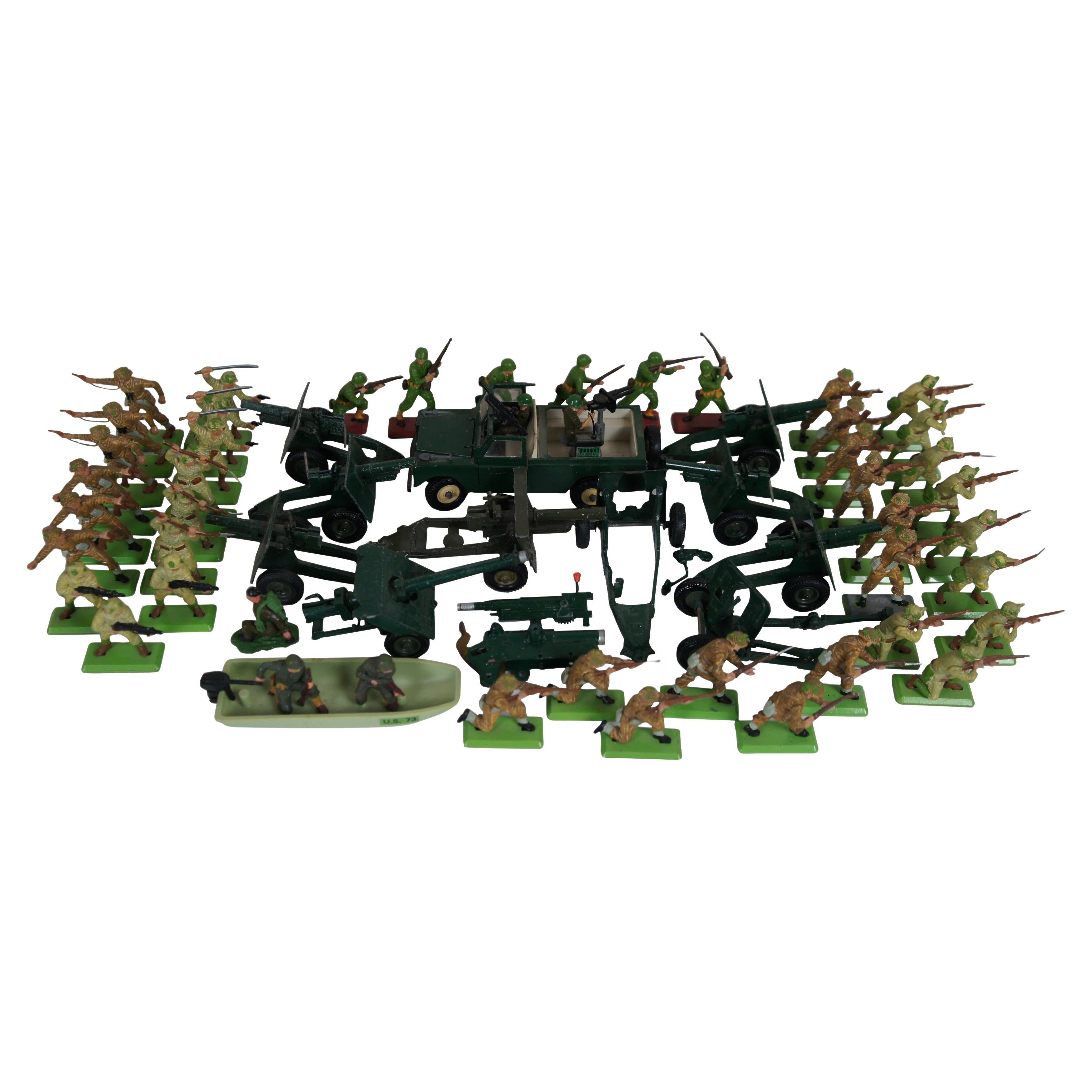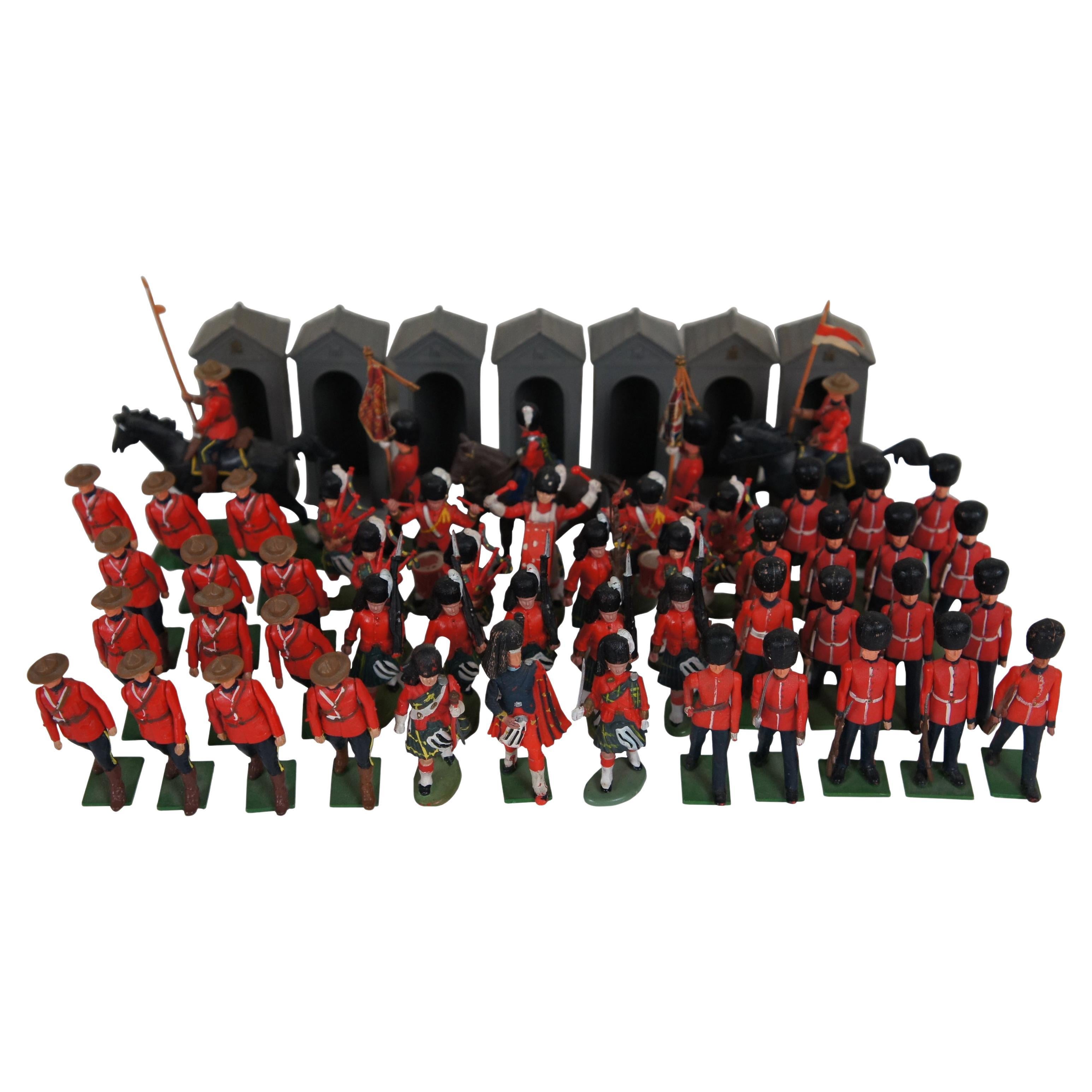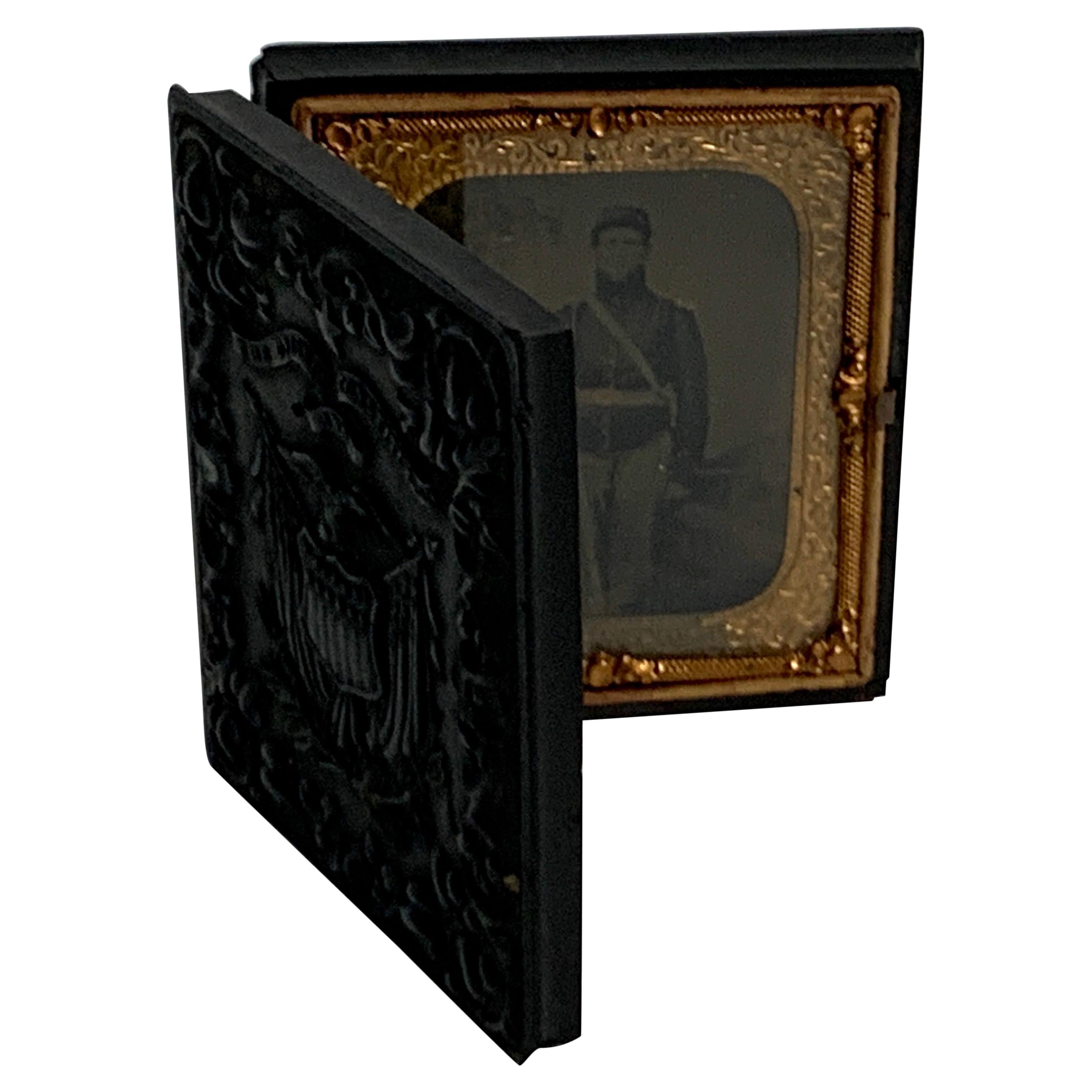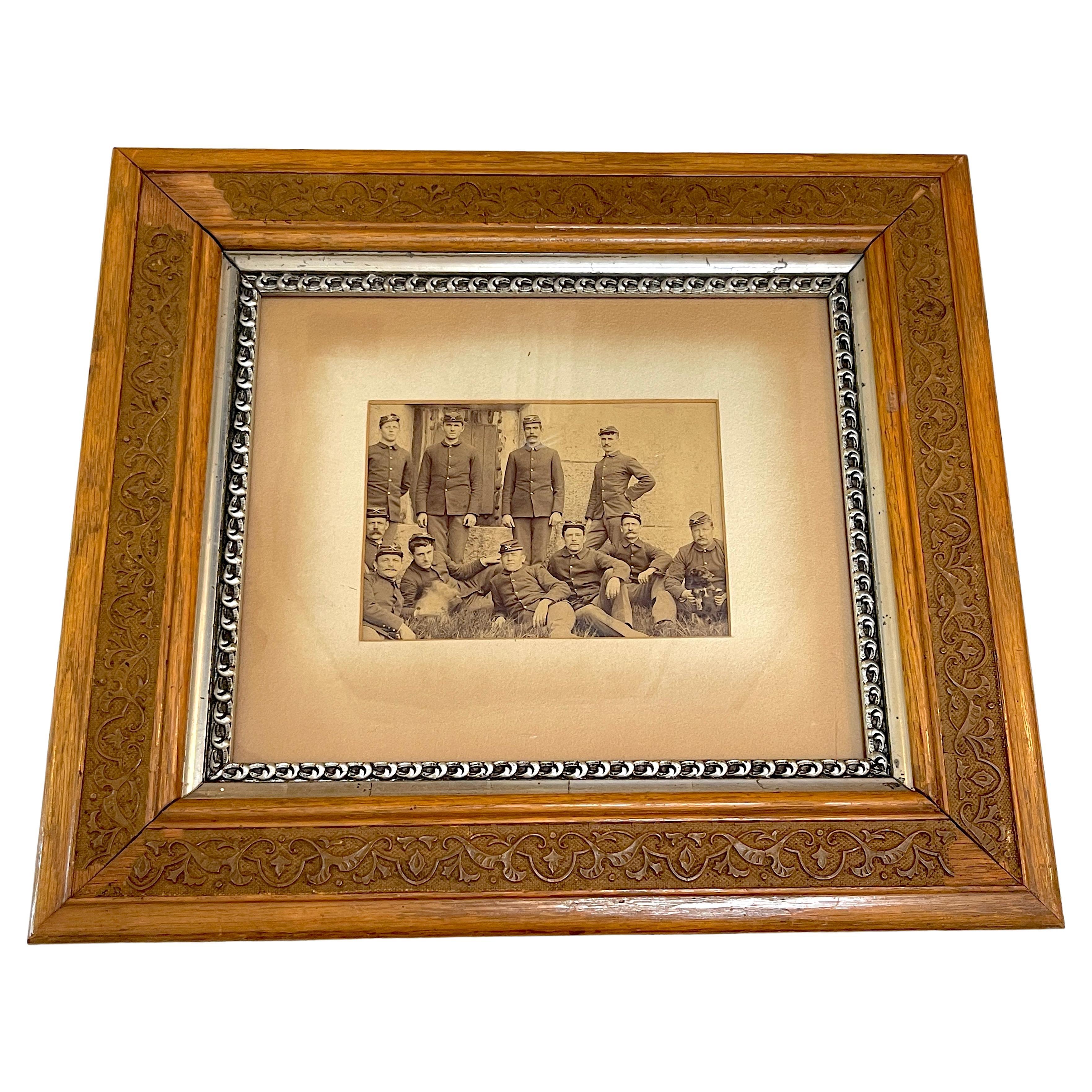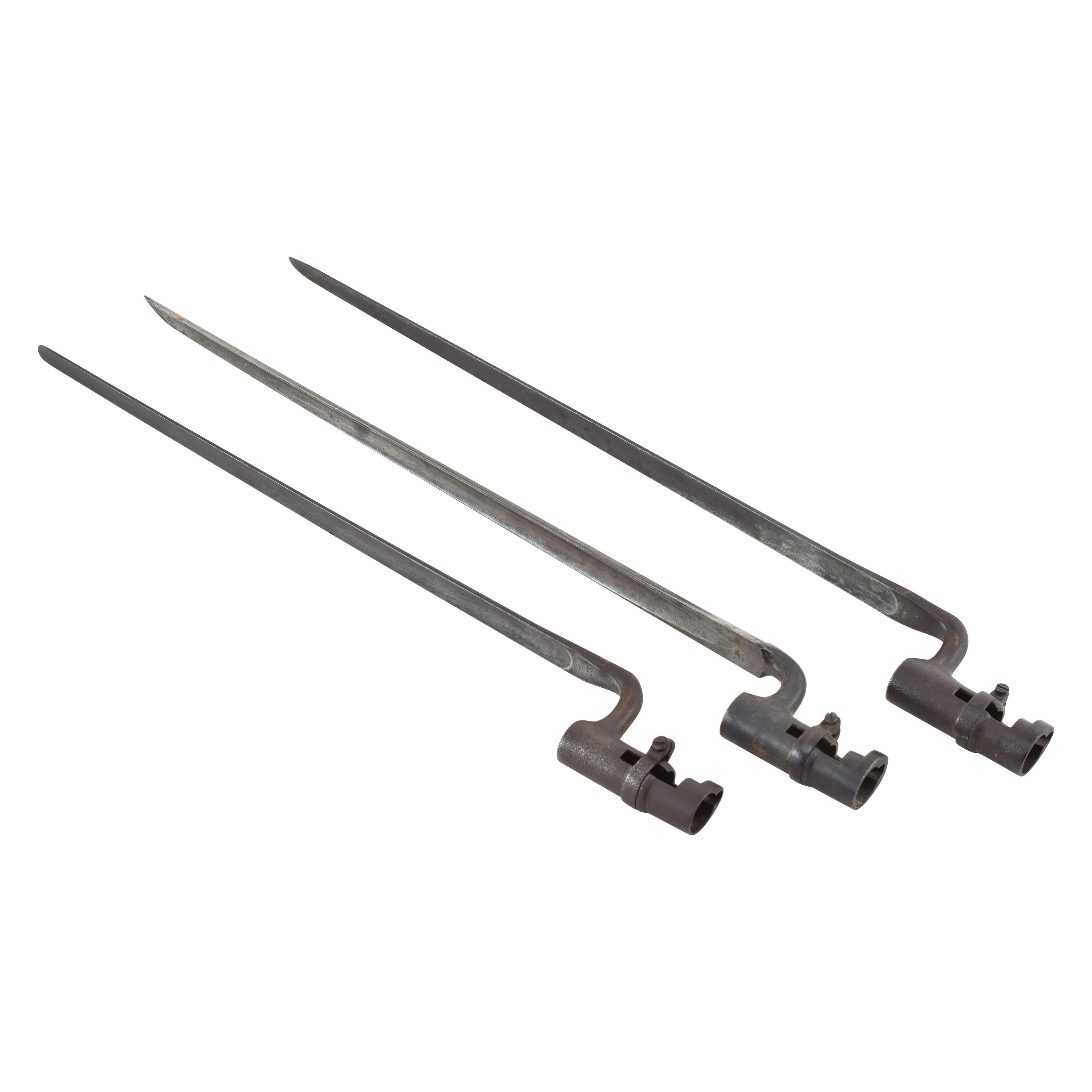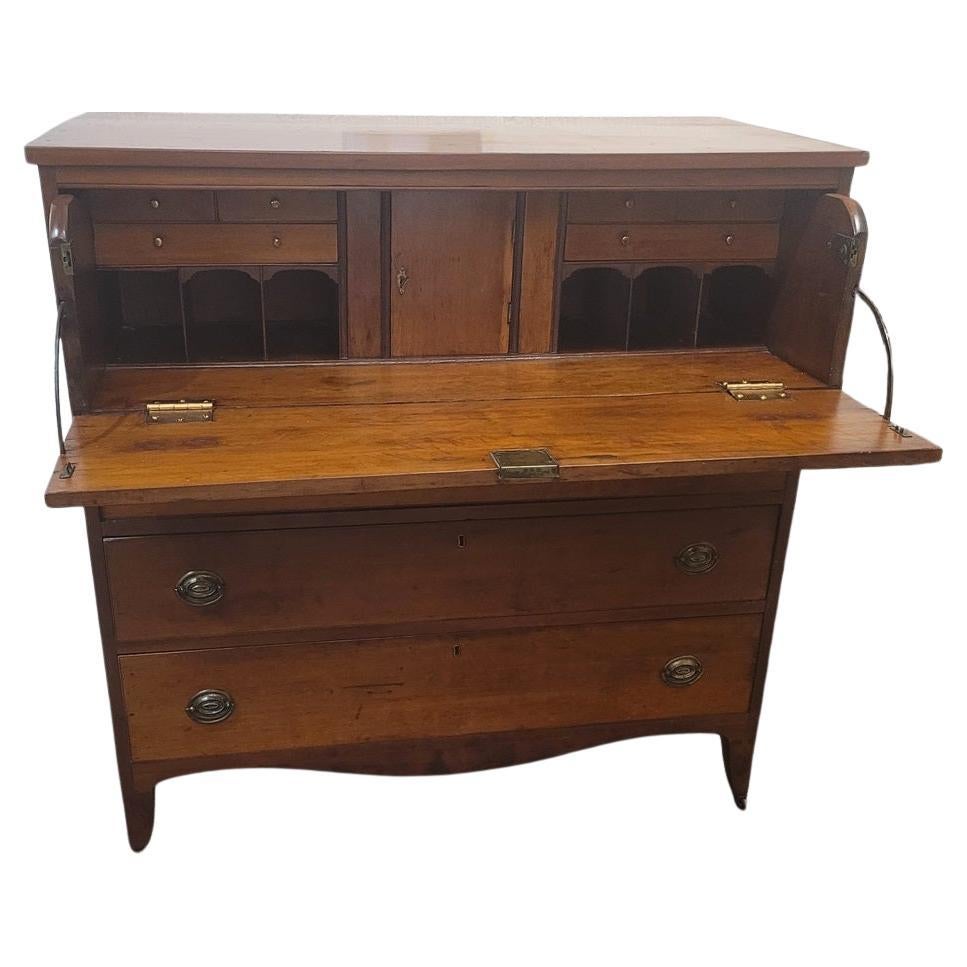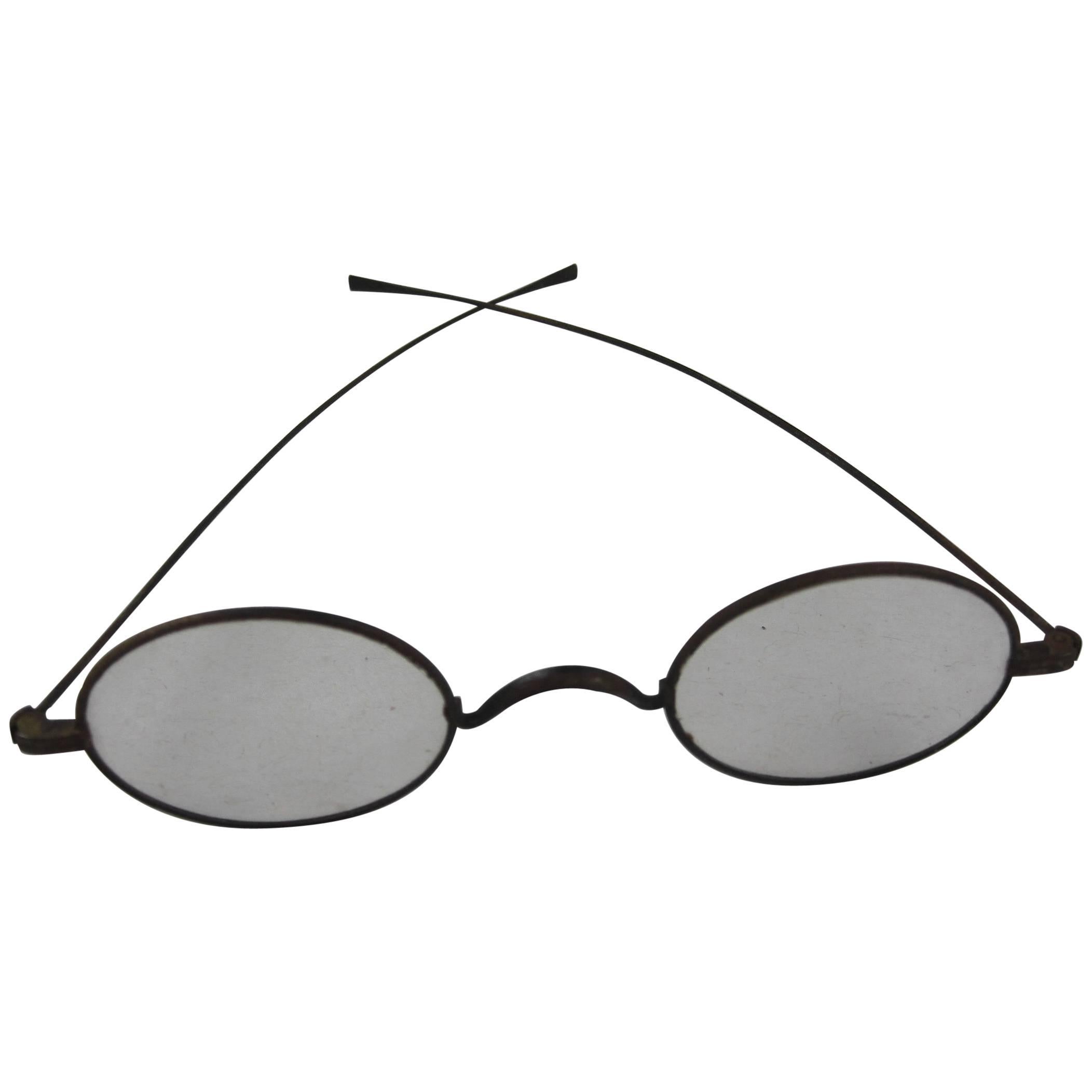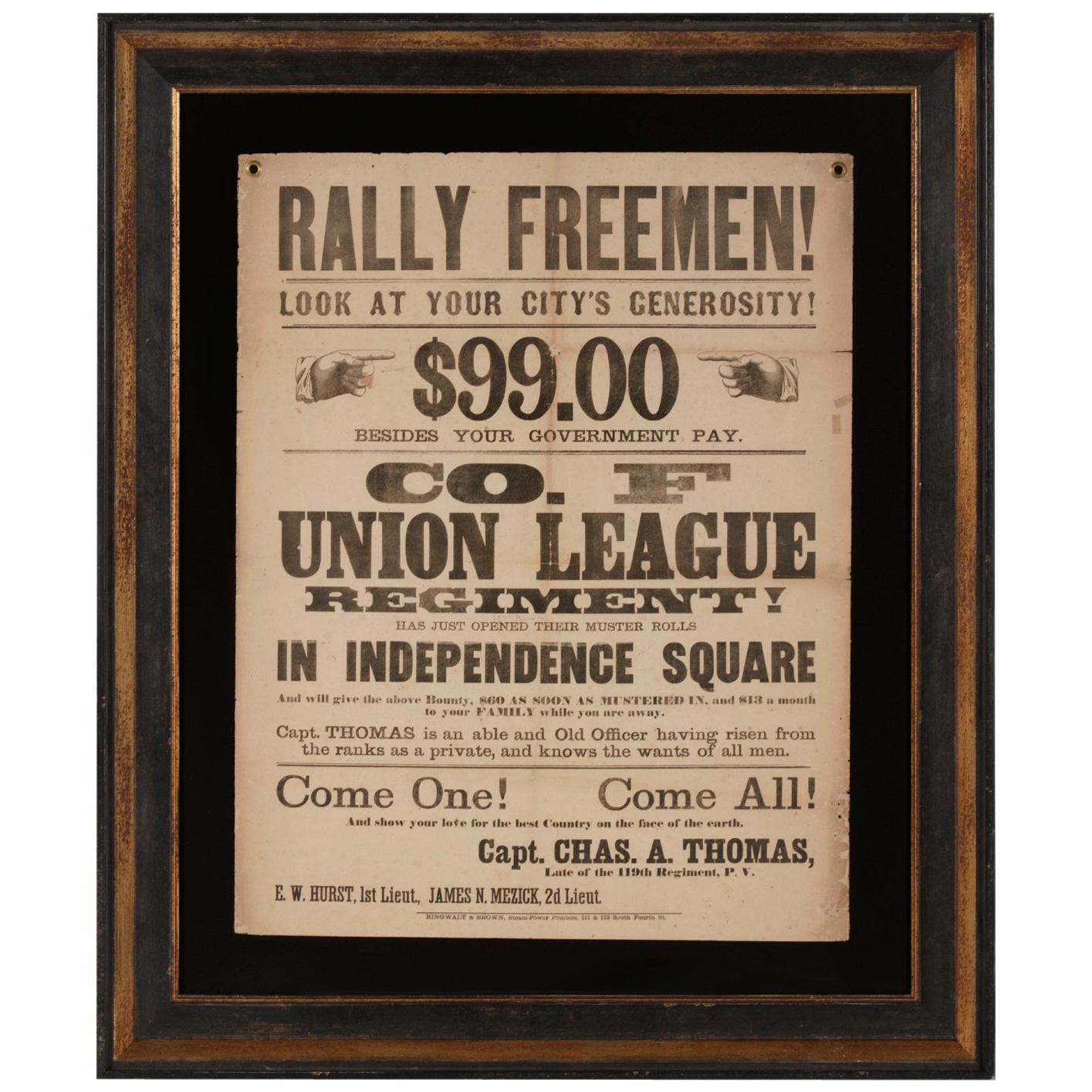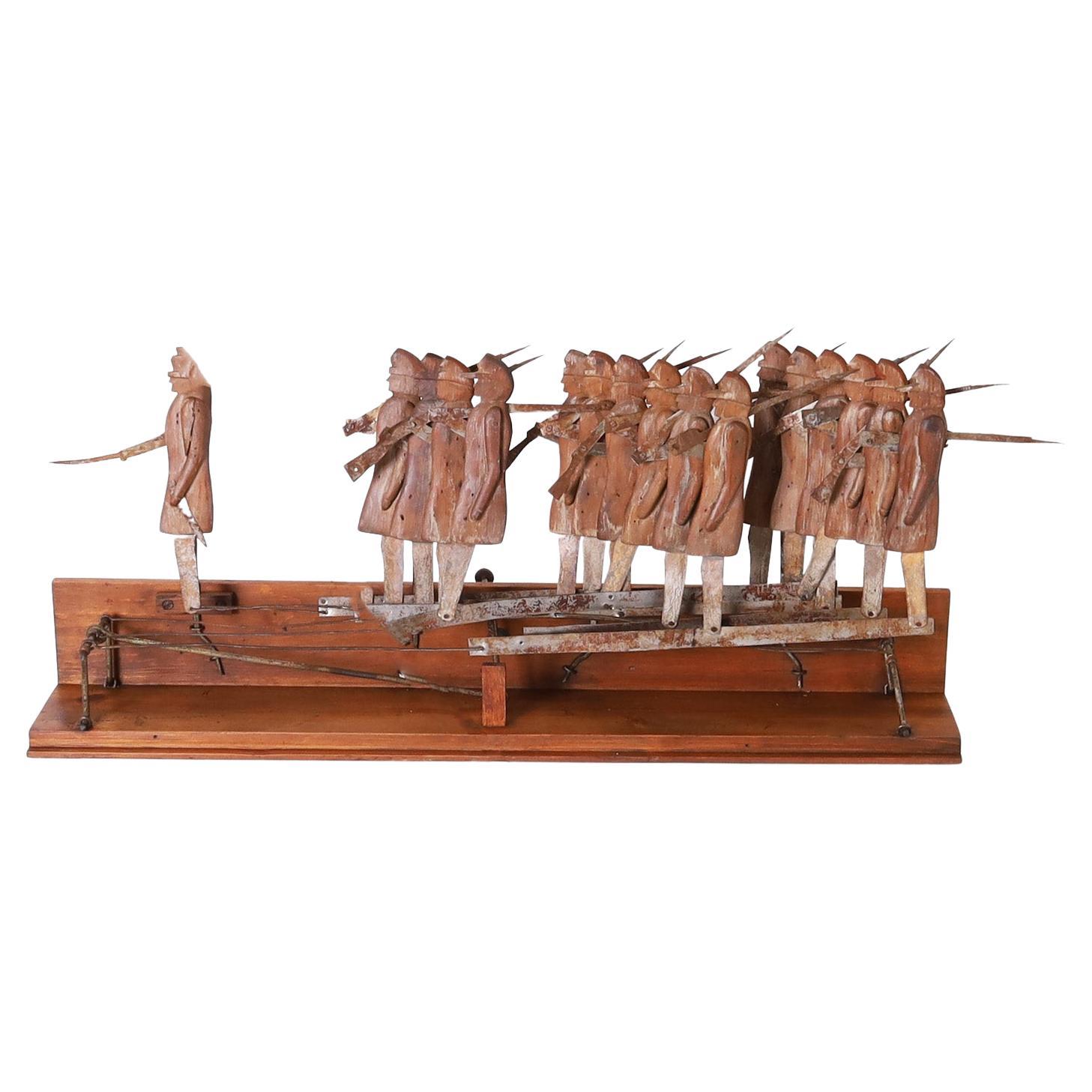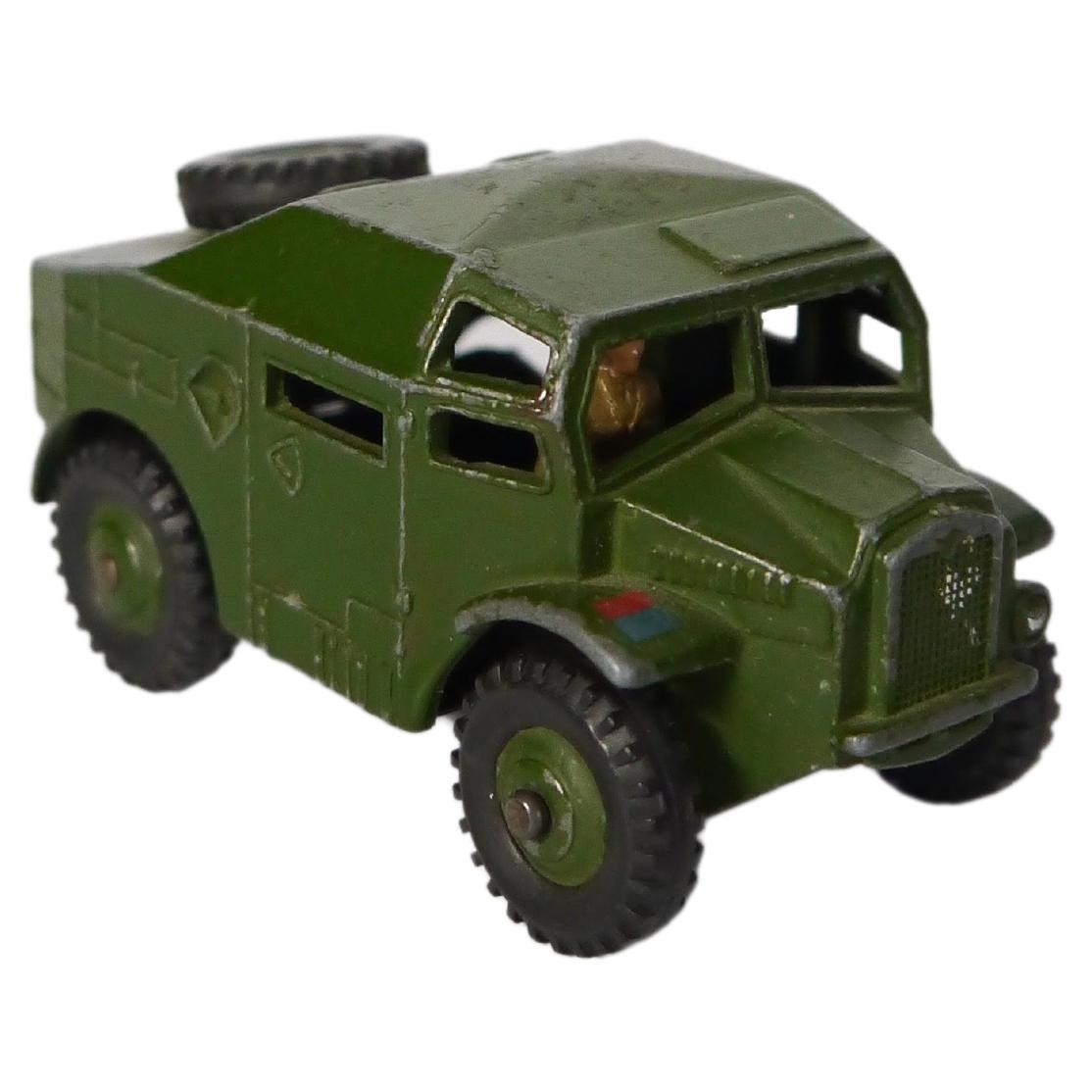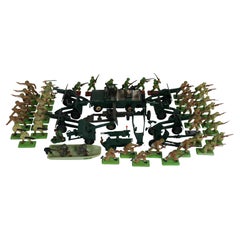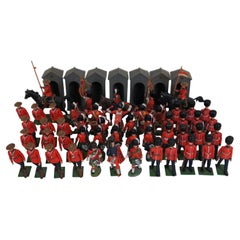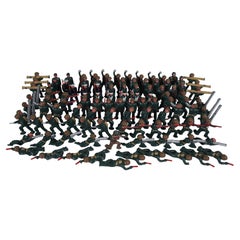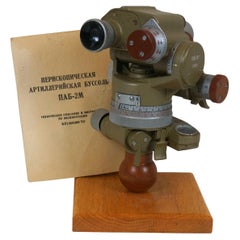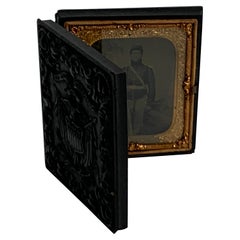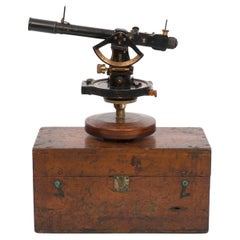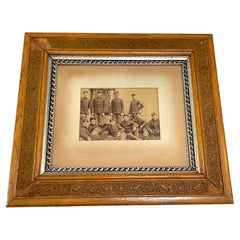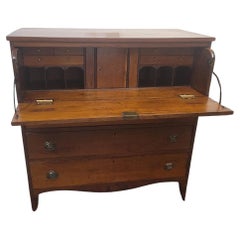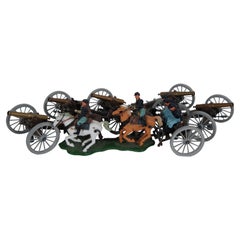
Britains American Civil War Union Toy Soldiers Gun Team Artillery Carriage
View Similar Items
Want more images or videos?
Request additional images or videos from the seller
1 of 13
Britains American Civil War Union Toy Soldiers Gun Team Artillery Carriage
About the Item
- Creator:Britains, Ltd. (Manufacturer)
- Dimensions:Height: 2.5 in (6.35 cm)Width: 8 in (20.32 cm)Depth: 3 in (7.62 cm)
- Sold As:Set of 6
- Materials and Techniques:
- Period:
- Date of Manufacture:1970s
- Condition:Wear consistent with age and use. Good Overall - Gentle wear, a few ramrods missing.
- Seller Location:Dayton, OH
- Reference Number:Seller: 415931stDibs: LU5343239891022
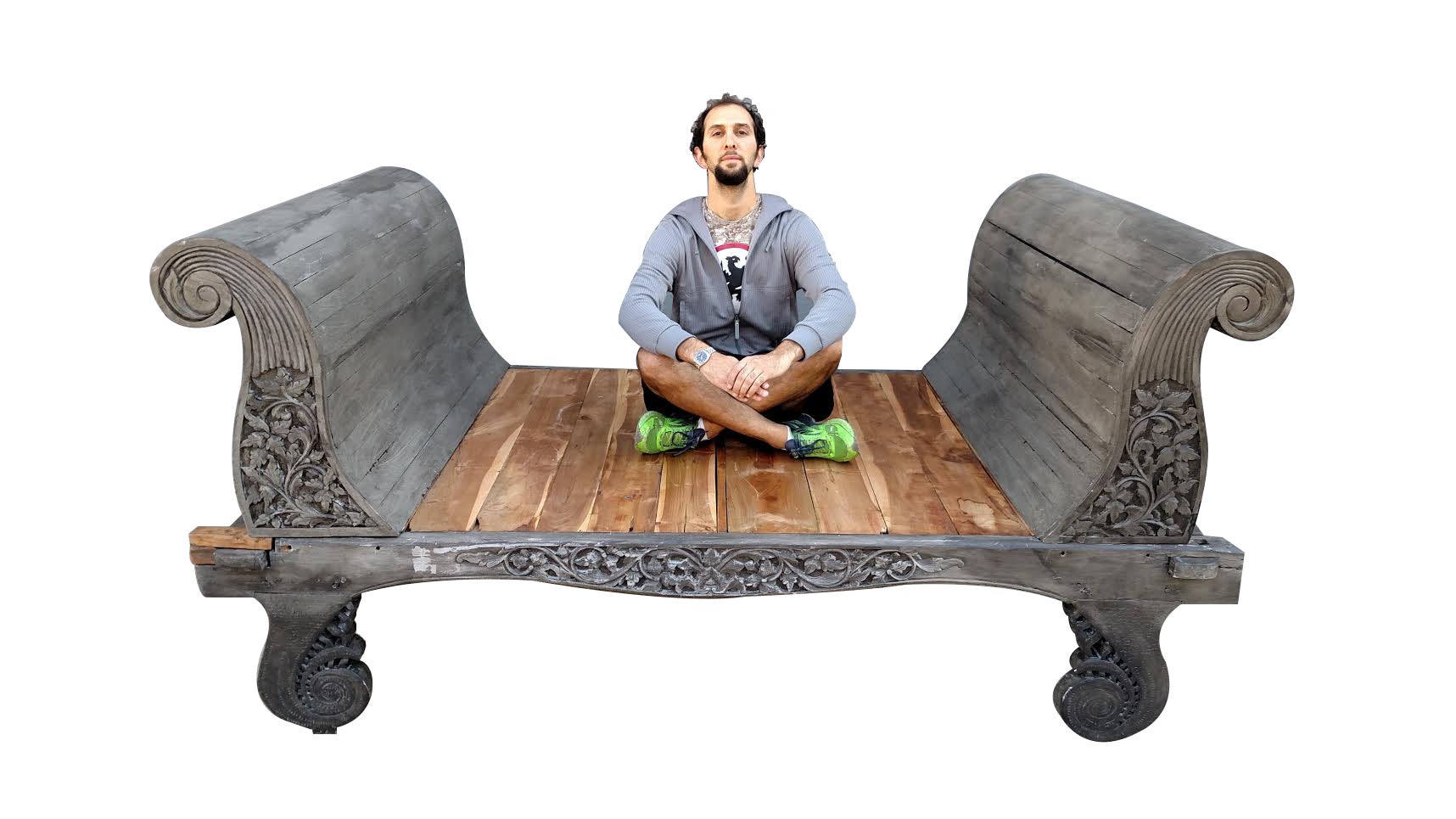
About the Seller
5.0
Platinum Seller
Premium sellers with a 4.7+ rating and 24-hour response times
Established in 2010
1stDibs seller since 2020
1,527 sales on 1stDibs
Authenticity Guarantee
In the unlikely event there’s an issue with an item’s authenticity, contact us within 1 year for a full refund. DetailsMoney-Back Guarantee
If your item is not as described, is damaged in transit, or does not arrive, contact us within 7 days for a full refund. Details24-Hour Cancellation
You have a 24-hour grace period in which to reconsider your purchase, with no questions asked.Vetted Professional Sellers
Our world-class sellers must adhere to strict standards for service and quality, maintaining the integrity of our listings.Price-Match Guarantee
If you find that a seller listed the same item for a lower price elsewhere, we’ll match it.Trusted Global Delivery
Our best-in-class carrier network provides specialized shipping options worldwide, including custom delivery.More From This Seller
View AllLot of 62 Britains Vietnam War Toy Soldiers Land Rover Jeep Artillery Boat
By Britains, Ltd.
Located in Dayton, OH
Lot of 62 late 1960s-1970s toy soldiers, weapons and vehicles by Britains Ltd. Lot includes: 47 total soldiers (mostly plastic with metal bases, three all plastic, and two in Jeep metal), 13 guns / cannons / pieces of artillery (one by Crescent Toy Co.), one boat, and one Land Rover.
"The "W. Britain" brand name of toy and collectable soldiers is derived from a company founded by William Britain Jr., a British toy manufacturer, who in 1893 invented the process of hollow casting in lead, and revolutionized the production of toy soldiers. In 1907 the family proprietorship, William Britain & Sons, incorporated as "Britains, Ltd". The Britain family controlled the firm until 1984 when it was sold to a British conglomerate, Dobson Park Industries. They combined the operations with an existing line of toys and renamed the company Britains Petite, Ltd. In the early 1950s Britains was associated with W. Horton Toys and Games which made the die-cast Lilliput ranges of small-scale, rather generic, cars and trucks and other vehicles. In 1959, Britains acquired Herald Miniatures which produced plastic figures designed by Roy Selwyn-Smith. In the 1950s, besides soldiers, a variety of vehicles began to appear, mostly in the military field. In 1966 safety regulations in the United Kingdom combined with rising costs halted the production of lead toy soldiers. Britains shifted most production of Herald plastic to Hong Kong from 1966. In 1971 Britains started Deetail plastic figures with metal bases that were initially manufactured in England but later outsourced to China. In 1973 Britains introduced New Metal models, which are die cast in a durable alloy. Initially these sets were aimed at the British souvenir market. In 1983 Britains responded to a growing collectors' market by introducing additional models and limited edition sets. In 1997, Britains Petite, Ltd was bought by Ertl Company of Iowa, a maker of die-cast toys. Ertl was subsequently bought by RC2 LLC, another American die-cast miniature and plastic kit maker. At this time, production of toy soldiers was moved to China. In 2011, Japanese-headquartered toy company Tomy acquired RC2 which included the Britains die-cast farm miniatures range. In 2005, the W. Britains brand was acquired by First Gear...
Category
Mid-20th Century Toys and Dolls
Materials
Metal
$468 Sale Price / set
20% Off
Lot of 61 Britains Toy Soldiers Deetail Scots Guards Highlanders Band Mounties
By Britains, Ltd.
Located in Dayton, OH
Lot of 61 circa 1960s - 1970s Deetail plastic toy soldiers by Britain Ltd. Lot includes Royal Canadian Mounties (two on horseback), Scots Guards, Scottish Highlanders including pipes and drums (one on horseback), and seven guardhouses.
"The "W. Britain" brand name of toy and collectable soldiers is derived from a company founded by William Britain Jr., a British toy manufacturer, who in 1893 invented the process of hollow casting in lead, and revolutionized the production of toy soldiers. In 1907 the family proprietorship, William Britain & Sons, incorporated as "Britains, Ltd". The Britain family controlled the firm until 1984 when it was sold to a British conglomerate, Dobson Park Industries. They combined the operations with an existing line of toys and renamed the company Britains Petite, Ltd. In the early 1950s Britains was associated with W. Horton Toys and Games which made the die-cast Lilliput ranges of small-scale, rather generic, cars and trucks and other vehicles. In 1959, Britains acquired Herald Miniatures which produced plastic figures designed by Roy Selwyn-Smith. In the 1950s, besides soldiers, a variety of vehicles began to appear, mostly in the military field. In 1966 safety regulations in the United Kingdom combined with rising costs halted the production of lead toy soldiers. Britains shifted most production of Herald plastic to Hong Kong from 1966. In 1971 Britains started Deetail plastic figures with metal bases that were initially manufactured in England but later outsourced to China. In 1973 Britains introduced New Metal models, which are die cast in a durable alloy. Initially these sets were aimed at the British souvenir market. In 1983 Britains responded to a growing collectors' market by introducing additional models and limited edition sets. In 1997, Britains Petite, Ltd was bought by Ertl Company of Iowa, a maker of die-cast toys. Ertl was subsequently bought by RC2 LLC, another American die-cast miniature and plastic kit maker. At this time, production of toy soldiers was moved to China. In 2011, Japanese-headquartered toy company Tomy acquired RC2 which included the Britains die-cast farm miniatures range. In 2005, the W. Britains brand was acquired by First Gear...
Category
Mid-20th Century Toys and Dolls
Materials
Plastic
$560 Sale Price / set
20% Off
Huge Lot 106 Barclay Manoil Podfoot Lead Toy Soldiers US Military Army Figures
Located in Dayton, OH
Lot of 106 mid century die cast lead, podfoot style toy soldiers by the Barclay Manufacturing Company.
"The Barclay Manufacturing Company was an American metal toy company based in New Jersey that specialised in diecast toy cars and hollowcast toy soldiers. Due to their common availability at five and dime stores, collectors often refer to Barclay's toy soldiers as "Dimestore soldiers". Barclay Manufacturing was formed by Leon Donze and Michael Levy in about 1922. In its heyday Barclay produced 500,000 toys a week, making them the largest toy soldier manufacturer at that time in the United States. In 1939 Barclay acquired another toy soldier company, Tommy Toy and its art deco sculptor Olive Kooken. Some of Barclay's first vehicles were slush cast white metal made in the 1930s. Also about this time, and into the 1940s, the company made a variety of military vehicles – tanks, trucks with cannon and other cars painted brown. Despite the inroads of plastic toy soldiers, Barclay kept manufacturing theirs in metal. Following the war, Barclay changed the helmets on their soldiers to the M1 Helmet. In about 1951 Barclay conserved metal by eliminating bases on their soldiers, which collectors nicknamed podfoot soldiers because each foot appeared as a flattened rounded blob. These were painted similar to figures in American comic books of the time – olive drab uniforms with green helmets with "enemy" soldiers in red uniforms with white helmets. In 1960, the lead soldiers...
Category
Mid-20th Century Toys and Dolls
Materials
Lead
$800 Sale Price / set
20% Off
1950s Russian Military PAB-2M Periscope Artillery Aiming Circle Theodolite 9"
Located in Dayton, OH
Vintage circa 1950s Russian military periscope artillery aiming circle - PAB-2M/7A919. Includes instruction booklet and hardwood base for sculpture mount display.
Designed to determ...
Category
Vintage 1950s Russian Industrial Scientific Instruments
Materials
Metal
$396 Sale Price
20% Off
Antique Articulating Teddy Bear Driving Wagon Platform Pull Toy Americana
Located in Dayton, OH
Antique wheeled platform articulating pull toy featuring a teddy bear stuffed animal seated in a red white and blue wagon with arms that move up and down a...
Category
Early 20th Century American Classical Toys and Dolls
Materials
Mohair, Hardwood
$468 Sale Price
20% Off
18th Century Moroccan Snaphaunce Miquelet Flintlock Rifle Dog Lock Gun Stampe
Located in Dayton, OH
A beautiful late 18th century Moroccan Miquelet Flintlock Rifle. Features a 56" Octagonal barrel wrapped in embossed brass. The buttstock is bone ...
Category
Antique 18th Century African Arms, Armor and Weapons
Materials
Brass
$1,080 Sale Price
20% Off
You May Also Like
Civil War Union Solider in Full Dress, Sword & Cannon, Union Gutta Percha Case
Located in West Palm Beach, FL
Civil War portrait, union solider in landscape in 'Union' Gutta Percha case
Rare and unusual, the Ambrotype of a Union solider, in full uniform, with sword, standing next to a cannon and house. Encased in ornate Gutta Percha Case with Union Flags...
Category
Antique 19th Century North American High Victorian Historical Memorabilia
Materials
Glass
$2,360 Sale Price
20% Off
World War 1 era (1914-18) Director No 5 Mark 1 Brass Artillery Director Gun/Case
Located in Canterbury, England
A very rare and well preserved World War 1 era (1914-18) Director No 5 Mark 1 brass artillery director theodolite gun sight, (reference no.5 mk1) complete with wooden transit case. ...
Category
Vintage 1910s Other Historical Memorabilia
Materials
Brass
Union Civil War Photo 11 L-2 Officers & Dog Possibly Richmond Prisons In Situ
Located in West Palm Beach, FL
Union Civil War Photo 11 L-2 Officers & Dog Possibly Richmond Prisons In Situ, 1861-1863, Period Board Mounted Photograph
A rare and historically significant Union Civil War photog...
Category
Antique 19th Century American Historical Memorabilia
Materials
Oak, Paper
American Hepplewhite Virginian Secretary Chest with Civil War Provenance
By George Hepplewhite
Located in Dallas, TX
PRESENTING a FANTASTIC and HISTORIC Early 19C American Hepplewhite Virginian Secretary Chest with OUTSTANDING Provenance.
This Secretary Chest was made in Virginia in the Early 19th Century, circa 1810.
It is made of cherry, walnut and maple and is most definitely in the Hepplewhite Style of the period, with it’s original Hepplewhite brass drawer pulls.
IT IS A REALLY INTRIGUING AND HISTORIC PIECE, ESPECIALLY, WHEN VIEWED IN CONTEXT WITH IT”S AMAZING PROVENANCE!
This piece was originally owned by Major William Alexander Obenchain who ‘hailed’ from the State of Virginia.
He was an engineer and was in the Virginia Corps of Engineers during the Civil War and served on General Robert E. Lee’s staff. It was acquired by him before the Civil War and we believe that this piece was on campaign with him during the War. We know for a fact that he fought at the Richmond Campaign in 1864, as we have, in our Collection, his original Field Map for that Campaign which ended the War.
It has remained in family ownership ever since.
It has come directly from the Family Estate, together with other VERY IMPORTANT items belonging to Major Obenchain and other IMPORTANT items that belonged to his wife, Eliza Calvert Hall-Obenchain. ALL these items contained in the Collection, are listed/posted individually on our Website.
The top drawer is on retractable curved side hinge supports and pulls outwards and drops to reveal a secretary and writing area.
The Bureau/Secretary Gallery has 6 drawers and 6 cubbies, a central tabernacle door with another drawer and 2 cubbies and this is flanked by 2 secret pull out compartments.
The central tabernacle door has it’s original key and working lock.
Closed, it is almost ‘flush’ like the rest of the drawers, with some very minor bowing through age.
The 3 drawers underneath are graduated in size and it ends with a serpentine shaped base and sits on four hand carved legs with original metal casters, marked ‘Universal 3’.
It has it’s original brasses and hardware throughout, save the addition to 2 contemporary replacement brass hinges to the drop down desk front, as the original hinges were broken, could not be repaired and were not supporting the weight of the drop down leaf.
Some minor repairs but not noticeable.
Otherwise, the piece is in it’s entirely, ORIGINAL condition!
What makes this piece even MORE INTRIGUING and APPEALING HISTORICALLY, are the 2 ‘historic’ circular holes on the piece:-
(1) in the back of the piece as seen in the photos. This hole is not symmetrical or fully round and appears to serve no purpose to the piece whatsoever. Sometimes, pieces have holes for wiring for lighting, put in them over the years, but this one never had such lighting or, indeed, any such explanation for this hole, AND
(2) the rear hole is replicated, in the corner portion of the bottom drawer and someone (a very long time ago) has used a tin can top, to cover the hole in the back of the drawer. The tin can top is period to the Civil War Era and is embossed “Minimum Volume 1 Pint”.
Our conclusion, is that (whilst we are, by no means ballistic experts) that these holes were created by musket balls, fired during one of the Major’s campaigns in the Civil War. It is entirely conceivable that this piece, being strapped into a covered wagon for carriage, would have been on it’s side. We are of the opinion that both holes, were caused or created by a musket ball entered the chest trough the base and back. We also believe that ‘the Major’, used what he had at his disposal on the battlefield, namely, a tin can lid to repair the hole in the drawer.
SO THIS PIECE IS A VERY SPECIAL PIECE OF US HISTORY, INDEED!
NOT ONLY IS IT AN EARLY 19th CENTURY AMERICAN PIECE, WITH A CONNECTION TO THE STATE OF VIRGINIA, THE CIVIL WAR, HISTORIC & IMPORTANT FIGURES IN THAT WAR AND IMPECCABLE PROVENANCE AND HISTORY!
IT IS TRULY UNIQUE!
William Alexander Obenchain. Born April 27, 1841 at Buchanan, Botetourt Co., Virginia.
Parents: Thomas Jefferson Obenchain and Elizabeth Ann Sweetland.
Entered VMI on July 18, 1859 as a member of the VMI (Virginia Military Institute...
Category
Antique Early 19th Century American American Classical Historical Memora...
Materials
Brass
Civil War Socket Bayonets
Located in Norton, MA
Three Socket Bayonets. One is a P-53 Civil War era marked "DEAKIN" and has a crown over 53, one is a "US" stamped dull tip, and the last is unmarked or stamped.
Category
Antique 19th Century American Arms, Armor and Weapons
Materials
Metal
Antique Civil War Photo in Case with Hair 1800's Photography Soldier Military
Located in Greer, SC
Stunning antique Civil War photograph of a gentleman in uniform holding a cane. Features three different tufts of hair, one of which is woven maki...
Category
Antique Late 19th Century American Victorian Historical Memorabilia
Materials
Wood, Paper
Recently Viewed
View AllMore Ways To Browse
Soldier Doll
Miniature China Set
Vintage Toy Storage
Carriage Seat
Vintage Horse Gear
Vintage Metal Wagons
Chinese War Horses
Wagon Seat
Metal Carriage Toy
Vintage Doll Carriage
Teething Ring
Tin Airplane
Vintage Metal Toy Tractors
Vintage Toy Scooters
Vintage Wooden Pull Toy
Alexander Girard Dolls
Antique Cat Doll
Antique German China Dolls
